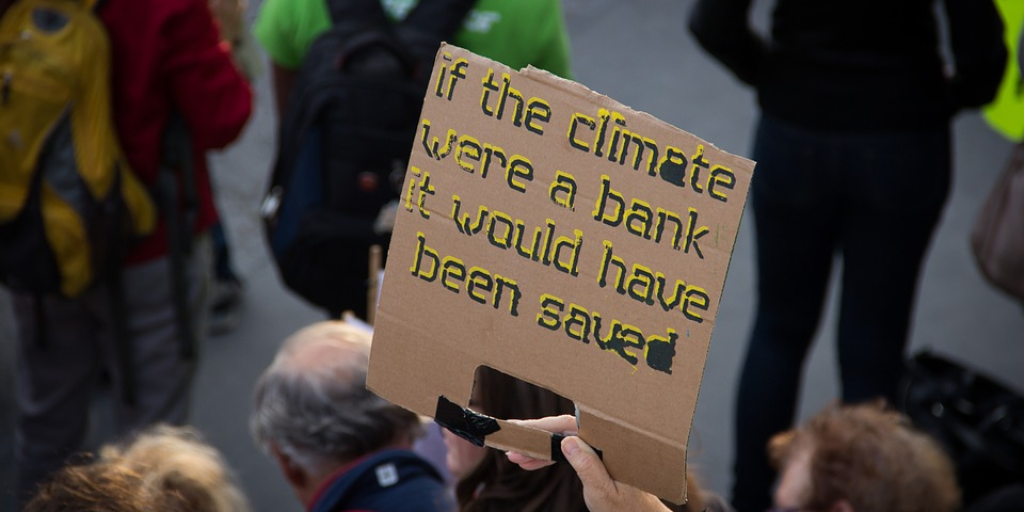My 19-year old niece showed me the Starbucks sticker on her reusable coffee cup, confounded that she was stuck with another piece of paper that would have to go in the bin.
My 4-year old daughter is dismayed by the amount of plastic in our oceans and how harmful they are to sea mammals. (She adores pacific white-sided dolphins, orcas, and beluga whales. I guess that’s what I get for raising a family on the west coast of Canada.)
16-year old climate activist Greta Thunberg captures the attention of World Economic Forum delegates at Davos and people around the world as she invites all of us to do #whateverittakes to address climate change and reverse global warming.
Young people are mindful, attentive, and informed about their impact on climate and this gives me optimism, but we can’t just burden our youth with the responsibility of reversing global warming.
We have the data and the technology to analyze changes happening to the polar ice cap, global temperature changes over time, and extreme weather patterns. The evidence is clear and rational arguments are made that individuals, businesses, and governments should all be taking steps to:
- change how we do things,
- change our behaviors and habits,
- let go of things that are damaging to our planet and atmosphere, and
- adopt things that enable us and future generations to survive, thrive, and be happy.
But decisions are not rational. We know from Antonio Damasio’s research on patients with damage to the part of the brain that controls emotions that emotions drive decisions. Someone with damage to the frontal lobe could analyze two alternatives rationally and logically but would either make bad decisions or fail to make decisions at all.
For whatever reason, for some people, the issue of climate change has no emotional resonance. Their emotions aren’t triggered enough for them to take any action now. Perhaps they feel it doesn’t impact them immediately.
For me, it makes perfect sense — or perhaps perfect emotional resonance — to live in way that helps make this planet and its resources last as long as possible. I want to leave the planet in the same state or better than how I found it, to the benefit of my children and future generations that don’t even have a direct connection to me.
When I left investment banking in 2008, I first tried to transition into the sustainability sector, but I failed to find my place in it. Yes, I had financing experience, but I lacked the technical expertise to be immediately useful. I did, however, find alignment in the impact investing and venture ecosystem, eventually putting my financial acumen to go use building a startup fund that invests in technology for good, developed by predominantly women-led businesses.
Ten years later, I feel things are coming full circle. At the start of 2018, I read a book that would give me immense optimism in this time of climate crisis. Curated and edited by Paul Hawken, the renowned environmentalist, entrepreneur, and author, Drawdown documents 100 solutions for reverse global warming. The book’s title refers to the point in time when the concentration of atmospheric greenhouse gases begins to decline on a year-to-year basis.
Some of the solutions are huge and require cooperation across a number of participants and policy changes such as the protection of tropical and temperate forests. Many are infrastructure solutions such as renewable methods of electricity generation and mass transit. But others still require the combination of many integrated solutions and that’s where things get interesting and where more of us can take action.
Pique Fund is an early-stage venture fund that Pique Ventures launched in 2014 and one of our portfolio companies is FoodMesh. FoodMesh is part of a category of technologies solving the logistics challenges of food waste — diverting otherwise edible surplus or mislabeled food from landfill and into the hands of people who want it and need it. According to Drawdown, reducing food waste is the third highest ranked solution based on the volume of reduced CO2. Two other Pique Fund portfolio companies Beanworks and ePACT Network automate and digitize processes — in the case of Beanworks, accounting workflow and in the case of ePACT Network, emergency contact information — not only reducing the amount of paper being used but also making the use of human resources more efficient.
Pique Fund focuses mainly on enterprise SaaS companies — that is early-stage ventures building software technology to help businesses solve a problem — and I can see enterprise SaaS opportunities amongst the Drawdown solutions such as in education, building automation, and the future of remote working just to name a few.
Through our early-stage investing in women-led technology ventures, I see the opportunity to have a positive impact on how we help people access the essential resources they need in a sustainable way, so that they can survive, thrive, and be happy on a planet that is enduring.
I encourage you to pick up a copy of Drawdown or check out the website or let me know if you’re building a technology venture that contributes to or is based on one of the Drawdown solutions.
About Pique Ventures
Pique Ventures is an impact investment and management company. Pique Ventures enables a diverse community of investors to pursue integrated investing. Integrated Investing helps investors evaluate and choose early-stage ventures that help create a better world by improving access to essential resources.




